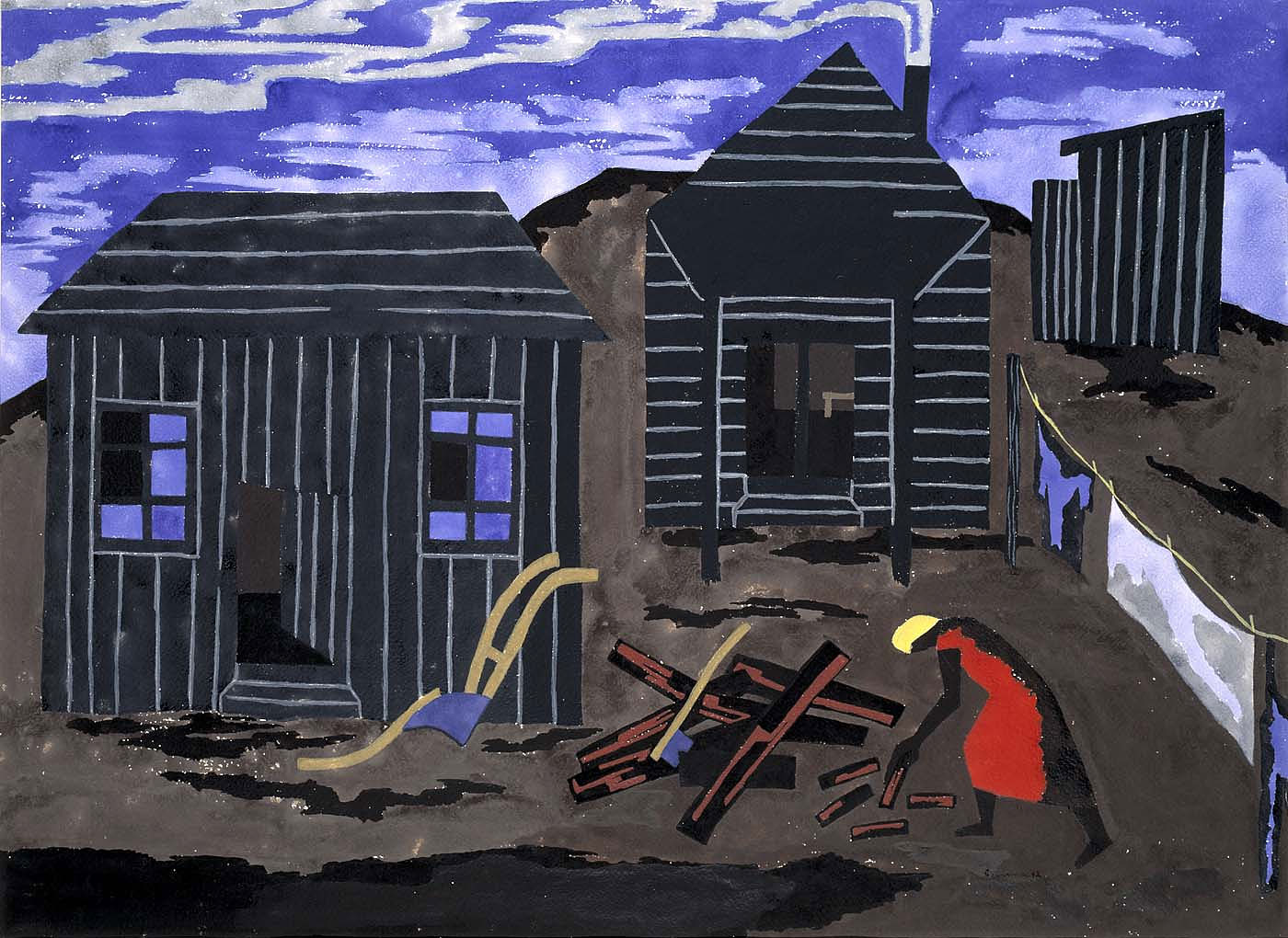
Firewood #55, by Jacob Lawrence, 1942. Smithsonian American Art Museum, Transfer from the U.S. Information Agency through the General Services Administration.
• The New York Times Magazine launches its 1619 project, examining the legacy of slavery in the United States four hundred years after the first ship carrying enslaved people landed on what would later become American soil. Start with the history of black music, minstrelsy, and approporiation or with how black activists made the ideal of American democracy a reality.
• Seventy-five years later, the underground command center that served as headquarters for the Paris resistence becomes the centerpiece of the new Musée de la liberation de Paris. (The Guardian)
• On Wayne’s World and the comedy renaissance of the 1990s. (The Ringer)
• In 1975 Elton John was so popular that even one of his worst songs debuted at number one. (Stereogum)
• This week in recent history: when everyone freaked out about vocal fry. (Literary Hub)
• Claude-Lévi Strauss and the structure of the social world. (Times Literary Supplement)
• “An upheaval of this scale and speed—the destruction of black farming, an occupation that had defined the African American experience—might in any other context be described as a revolution, or seen as a historical fulcrum. But it came and went with little remark.” (The Atlantic)
• Can I convince you to listen to the history of persuasion? (WNYC)
• Reconstructing the life of an extra from his silent performances. (Los Angeles Review of Books)
• From the archives: a news report on that 1989 craze, laser tag. (BBC Archive)
• When the object of your fandom is an indecipherable medieval manuscript, the stakes are surprisingly high. (Washington Post)
• Making space for women, and shopping, in nineteenth-century downtown Chicago. (Jezebel)
• The history of Confederate monuments, two years after Charlottesville: “The women who raised the money to build the monuments understood the connections between these symbols and white supremacy. African Americans and their ancestors who were persecuted under the system of Jim Crow have made the connection, as have many white Southerners. And the men who organized and participated in the Charlottesville uprising made that connection.” (New York Times)
• In fossil news, penguins were once giant. (BBC.com)
• This week in obituaries: the man who invented the Snurfer—a precursor to the snowboard, a New York City disco DJ, one of the first women to fly military aircraft for the United States, a children’s poet, the woman who brought high-end fashion to post-Soviet Russia, two musicians who championed early jazz, and Ann Snitow.